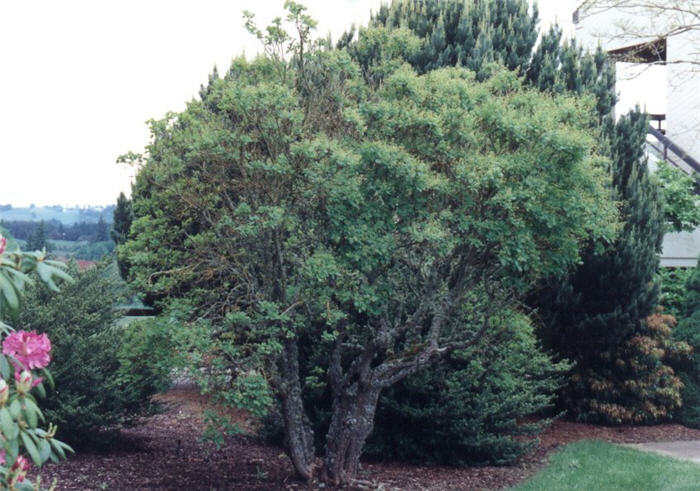| Botanical Name: Cotinus coggygria | |
| Common Name: Smoketree |

-
Anatomy
-
Culture
-
Design
Plant Type
Tree, Shrub
Height Range
6-12', 12-25'
Flower Color
Yellow
Flower Season
Spring
Leaf Color
Bronze, Blue Green, Purple
Bark Color
Grey
Fruit Color
n/a
Fruit Season
n/a
Sun
Full
Water
Low, Medium
Growth Rate
Moderate
Soil Type
Clay, Loam, Rocky, Unparticular
Soil Condition
Average, Rich, Poor, Well-drained, Dry
Soil pH
Neutral, Basic
Adverse Factors
n/a
Design Styles
English Cottage, Mediterranean, Ranch, Spanish, Native Garden
Accenting Features
Fall Color, Multi-trunk Tree, Showy Flowers, Specimen
Seasonal Interest
Winter, Summer, Fall
Location Uses
Background, Shrub Border, Foundation, Patio, Walls / Fences
Special Uses
Screen, Small Spaces
Attracts Wildlife
n/a
Information by: Stephanie Duer
Photographer: Steve Mullany
Photographer: Steve Mullany
-
Description
-
Notes
Smoketree is a deciduous shrub with a multi-stemmed, upright habit, growing about 10 to 15 feet tall and wide. Can be pruned to be a small tree. Its common name is not from the tiny, insignificant, yellowish spring flowers, but from the billowy hairs (attached to elongated stalks on the spent flower clusters) which turn a smokey pink to purplish pink in summer, covering the tree with fluffy, hazy, smoke-like puffs. Bluish-green leaves are rounded. Several attractive purple-leaved cultivars of this species are available and are generally more popular landscape plants than the species. Fall color is highly variable, but at its best produces very attractive shades of yellow, orange, red and purplish-red.
Grow in full sun and well-drained soils; tolerates wide range of soils except wet, poorly-drained ones. Prefers somewhat infertile loams, but also does well in poor, rocky soils. Shallow fibrous root system makes it hard to grow anything but shallow-rooted groundcovers underneath. If bloom is not a concern, stems may be cut back hard in early spring each year to induce growth of vigorous new shoots with slightly larger than normal leaves. Such hard annual prunings will control size, but most likely at the expense of profuse flowering. Hard pruning is more often done on the purple-leaved cultivars as new foliage usually has the brightest color.